A Conversation with Cara Phillips
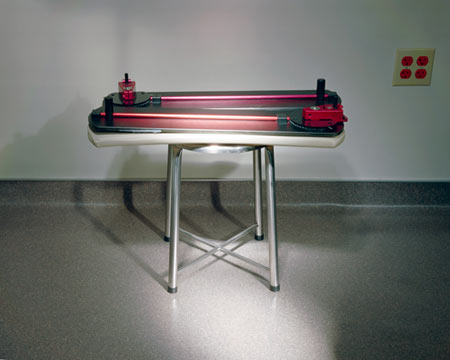
Cara Phillips is in the process of creating a body of work on the extreme end of the beauty industry, whose work usually is invisible: The plastic/cosmetic surgery business. Since I have always been quite baffled by the general acceptance of beauty ideals that only a tiny fraction of the population can easily conform to, I asked Cara whether she’d be willing to tell me a little bit about her work and about what’s behind it, and I’m glad she agreed to it.
Jörg Colberg: In your bio it says that you “came to photography after spending much of [your] childhood in front of the camera and a stint in the beauty business.” Given the subject matter of your recent work, I’m curious to learn what caused you to turn your lens on the “beauty” business, questioning the system you used to work in?
Cara Phillips: This is complicated for me to answer. There are many factors that went in to my choice of subject matter, the simplest perhaps is that I was following a version of the adage, “write what you know.” When I was studying with Joel Sternfeld, my first body of work was a group of portraits of women. I would set up the lights and camera, and then leave the subjects alone with a shutter release cable. I was concerned with the objectification of women in the photographic exchange. I knew from my experience as a child, modeling for the Ford Children’s Division in New York, that most women immediately attempt to please the photographer and are unable to relax. We are so preoccupied with “looking good,” that we can not present a true portrait of ourselves. Although there are artists who do manage to make “real” or “ugly” portraits, but it only happens when you are willing to push your subjects, or get them high like certain well-known fashion shooters. After what I went through in front of the camera, I am not comfortable doing that. But in the end, I did not feel that work was at the source of the issue, but dealing in its after-effects.
My own past is definitely a big factor in my photography. I worked for many years in the retail beauty industry at some of the most expensive stores in the country. Applying make-up to women everyday, I started to notice that almost everyone who sat in my chair was extremely self-critical, and that the salespeople who exploited that self-loathing were the top producers. It seemed like the more they pointed out flaws, the more the women trusted them. Because after they had discovered so many things that needed to “be fixed,” they now offered their clients solutions. There are not many places where you can find people who can not only identify your problems but sell the answers. So I guess all of these experiences were percolating in my mind, and then I have my own very real issues with my body. I suffered from body and eating issues for most of my adult life. I know how it feels to think that if you can just look a certain way, that you can finally be happy. Seeking beauty makes an excellent surrogate for dealing with more the challenging needs of love, fulfillment, joy, human interaction, friendship, accomplishment, etc. So when I was searching for a mode to manifest the pressures women were facing about their bodies, I began to have the image of an empty, darkened beauty treatment room in my head. Eventually I made my first 4x5 image of a nail salon, and I knew that I was on my way to capturing the complexity of how the beauty industry both creates and satisfy female self-loathing. In that time, I also freed myself from the photojournalism ideal, and decided that I could make ‘documentary’ images that reflected my personal truth, rather than attempt to capture the reality of the place.
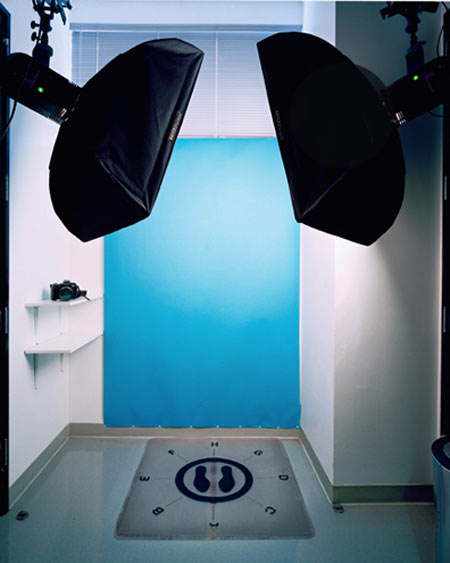
JC: This isn’t really a photography question per se - even though it touches photography, but it’s something I have been wondering for a long time: Given that the beauty industry is so toxic for so many women - with artificial beauty “ideals” causing, for example, eating disorders - why is it still so widely accepted and questioned so little?
CP: Well as I said, I had an eating disorder for many years, and I will always be extra sensitive to criticism and certain body issues, but I think the reason the beauty industry thrives and is a 40+ billion US dollars a year business, has to do with the psychology of women. Or at least how we are socialized. I grew up have a distinct sense that as a girl, I was expected to be sweet, accommodating, helpful and good. This message is built in to our culture. But now, women are also expected to achieve in the workforce, be physically fit, and be permanently youthful. So on one hand, the is enormous pressure to look good, but on the other most women are overworked and are not good at asking to have their needs met by others. That is where the beauty industry steps in, it is the one place where women can be taken care of by others and where it is ok for them to be indulgent, or selfish. I mean the L’Oreal slogan, “Because you’re worth it” says it all. And the rise of cosmetic surgery has added another challenge, because now, you have no excuse for being, fat, ugly, small chested, or flabby. Price is no longer a problem, many cosmetic surgeons now offer instant online financing on their websites. The temptation for those who do not know how to find fulfillment in other forms is overwhelming. If you abstain, you risk being judged against those who have been surgically improved. And of course Americans like to win. Not to say that there are not women who chose to ignore beauty standards or who are lucky enough to be immune to them.
JC: But still… From conversations I have had with women, it appears that there is a huge amount of frustration and anger, and I often wonder why the beauty industry has not been targeted in the same fashion as, say, companies that use child labor and/or sweat shops in Third World countries or companies that produce cigarettes. I would imagine an industry that relies to a huge extent on its public perception is extremely vulnerable to similar campaigns as those waged against, for example, Nike or Martha Stewart. But what is partly happening, which I personally find absolutely preposterous, is that some beauty companies now produce ads where they decry beauty ideals and the Photoshopping of models, only to push their own products, which supposedly have nothing to do with those beauty ideals. What is going on here?

CP: I would say it similar to BP and Exxon having “Green” advertising campaigns. We all know that it is a PR thing, but it makes us feel slightly less guilty about our oil consumption. I guess a crude analogy for these companies marketing tactics, would be like a husband saying, “Honey, I know I beat you up every night, but I take out the garbage once a year.” To be honest I think women are not being given viable options to the current beauty culture. The choice seems to be total rejection, or total submission. To be honest, I still enjoy many aspects of “girl culture,” but I often feel guilty being a part of it. The reality is that most women still get their self-esteem from how others perceive them. I think that this applies to more than just women, but for some reason we seem more susceptible to this idea. As long as women define their worth by how attractive they are, the beauty companies and plastic surgeons will make money. But our culture also values women for the visual pleasure they provide, and for the money that can be made from exploiting their beauty. Perhaps as women become more valuable to the workforce, some of this will dissipate, but so far it seems that the beauty pressures are spreading to gay men and even heterosexual men. Women are not the only ones getting botoxed these days.
JC: Coming back to photography, why are these heavily Photoshopped images - where people are made to look as if they were made of plastic, with perfect proportions and no flaws - that are so ubiquitous on the covers and inside of magazines so widely accepted?
CP: This I don’t think I, or anyone else can answer. Retouching has always existed in photography in some form. I think the prevalence of perfected imagery has to do again with commerce. If you think about it, if you are selling a skin cream, are you going to sell more cream if you use a girl in the ad with perfect skin or bad skin? Once they had the option of perfecting the perfect skin, the same logic applies. As for magazines, most women’s magazines exist only to sell clothes and cosmetics. So if they create a more beautiful and perfect ideal, then women will have to buy more and more products to keep up. Cosmetic Surgery and the beauty industry are really the ultimate capitalist invention. When you run out of products to make and services to sell, the last frontier is the human body. Look at the sales of prescription drugs, vitamins, and fitness products and services. I am not preaching socialism, I just think that the system that keeps all of us buying the latest cream is more about money then real beauty standards. One jar of moisturizer, used correctly should last at least 4 months or so. How can they make money, if you buy 2 or 3 jars a year? That’s why you must have, a day cream, a night cream, an eye cream, a neck cream, a cleanser and a toner, an exfoliator, etc. Cosmetic surgery functions the same way. When you have the fat sucked out of your thighs, suddenly the rest of you does not compare to the surgically improved part. So now you need to get everything else on par with the new bit, except time keeps going by, and things keep slipping, so you never really win.
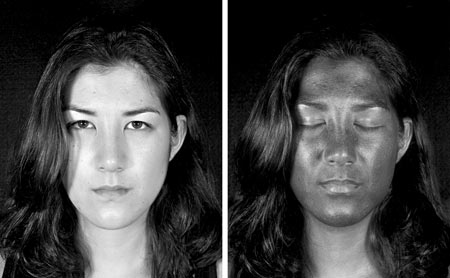
For next body of work, I am confronting this more directly. I am interested in flaws, and the choice between finding them beautiful or submitting ourselves to the cultural lens. One tactic used to sell beauty treatments is the use of UV photography to show women all the skin damage lying in wait under surface waiting to come out someday. I am shooting portraits using the same filter, but asking are these flaws, which are not even visible to the human eye, not beautiful in some way.
JC: I admit when I looked at these images I was wondering where I was supposed to see the flaws (I’m still looking…). So it would seem that the viewer’s brain creates a lot of the meaning in these portraits. I suppose we could have a long discussion about portraiture, which obviously is beyond the scope of our conversation here. But let me just ask you this: Given that with these portraits so much depends on how you look at them, how will you steer (for a lack of a better word) the viewer towards what you want to say with them?
CP: I am also shooting the women without the filter, so I am not sure yet, whether I will include both images for comparison. These portraits will definitely need text. Also I think that even though it is a bit of cliché to ‘print big,” that the subtle marks etc. will have a lot more impact at a larger size. And I think that if they are beautiful images, that defy what we expect is a beautiful image of a women, that starts the conversation I am looking for,
Coming from my background, there is something radical about deliberately showing flaws. The images we see of women are so manipulated. Every flaw is covered first with professional make-up, and then with retouching as you alluded to in your earlier questions. Most women, myself included, have been socialized from birth to immediately cover or remove any flaw that appears on their face. And the cosmetic industry is there to help. Almost every cream on the market, Vitamin C, Retinol, Glycolic Acids, Kinerase, Peptides, and many others, claim to penetrate the dermis (the deepest layer of skin) to give you clearer, smoother, and more radiant skin. And the average cream is around $50 in a department store, but many of them are up to $200 to $350 a jar. The UV filter shows, every mark, scar and freckle underneath the skin. So I guess these are photographs of what we are being told to fight, but the reality is that almost none of it is visible.
Also, almost every major beauty photographer is male. So are most of the top executives at beauty corporations. So are most of the top pro make-up artists. And for that matter, so are most cosmetic surgeons. So the images that set standard are created almost entirely by men. I think it is important for women to start making images that present another view, but not one that merely ‘feminizes” the male gaze.
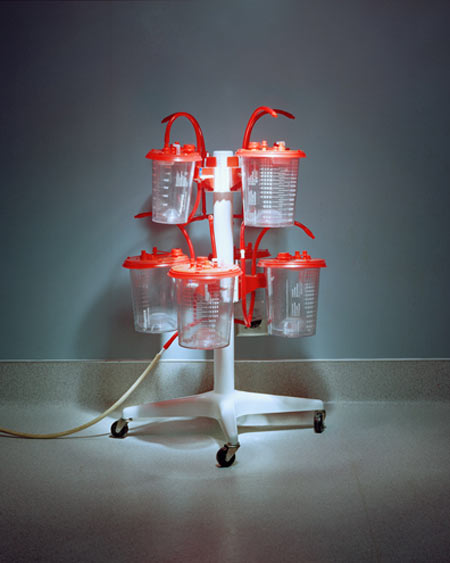
JC: Your other body of work shows parts of the plastic-surgery and beauty business. I’d be curious to learn how you decided to show things the way you do and what you are trying to achieve with the work.
CP: I chose not to do portraits deliberately because when we look at an image of a person, we tend to make assumptions about them. They become the ‘other’ who we can easily blame for their individual behavior. I do not judge women for getting surgery, and the doctors are responding to a market that has been created. When we see before and after images of surgery it is almost impossible not to think, “wow, they do look better,” or “my god, what have they done to themselves!” I think once judgment enters our psyche, it is very hard to be open to intellectual ideas beyond how we feel about that individual choice. For instance, when I see portraits of people who are covered in tattoos, I can only think what would possess them to do that. I never make it to the rejection of beauty ideals part, because I can’t get past my own discomfort with how they look. That is why I chose to photograph the ‘things’ that reflect how it feels to be in these offices.
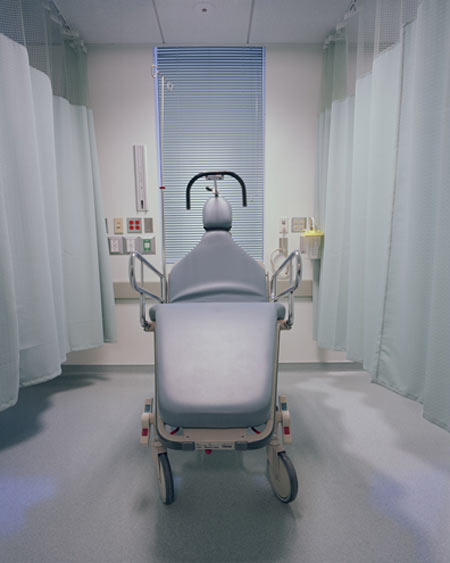
When I see those chairs, I immediately imagine sitting gown in a paper gown and exposing my body to a male surgeon under spotlights and offering up my flaws to be fixed. Because as tempting as that is, as soon as he begins to draw on my body with a magic marker, whatever terrible ideas I may have created in my mind become real. There is no going back to a place of self acceptance. I want to the viewer to also place themselves in that chair, in hopes that it makes them question their ideas about self-image. The machines, to me, have a talisman quality, like mysterious sculptures of worship from a lost culture. And in a way they become Gods, we let them breath for us, bring us back to life if necessary, and transform our bodies. The still life’s and rooms are more like cultural artifacts. In the end, this work is extremely personal. When I first started shooting in these offices I would get physically sick being there, but after a time, I think it really helped me become stronger. My hope is that the images make people thank about their own relationships with their bodies and how they respond to the cultural clues around them. I certainly do not have all the answers, but I think that beauty is often dismissed as superficial subject, but by doing that, people often miss that those struggling with how they look, are often unhappy about something much deeper.
JC: In a recent note on Chelsea Art Galleries, a very alarming trend was noted: “In a study of the language in more than 3,400 gallery press releases from 2006 and 2007, chelseaartgalleries.com found that women still are significantly underrepresented, and it appears to be getting worse.” (my emphasis) Are we really making no progress, even in the arts, supposedly one of the most liberal areas in our society? And what can artists, female and male, do to change things?
CP: No, we have definitely made progress. There are so many more female photographers now, and art schools are churning out a whole new generation. That said, the photo industry is still dominated by white straight men, like most of the world. But I think that there are opportunities for everyone now and slowly it will change. There is nothing that can stop it now. But the one thing that continually disappoints me is the lack of female networking and support in the art world. I have had one female photographer in my life. She really helped my work dramatically, but she was also my teacher. Any of the female photographers I have met or reached out to, have seemed uninterested or said point blank that they did not have time. Perhaps because there are fewer opportunities for women, or because many of them are trying to juggle motherhood and an art career, we just don’t have the old boys network that gets you in the door and therefore have to rely on older, male artists to help us. You have the option of going to Yale, or any of the other good MFA programs to make connections. But I always find it kind of sad, that all the successful female photographers who have come out of Yale, are attributed to Gregory Crewdson and the other über-male faculty. You can see that this system can be problematic. So far blogging has been the only place I have made any connections with other female artists and it has been a really great experience.
 By
By